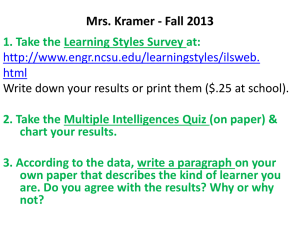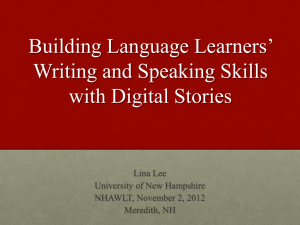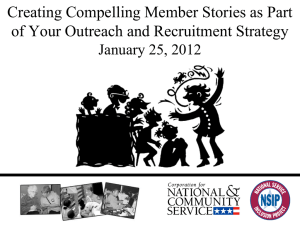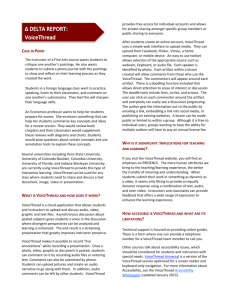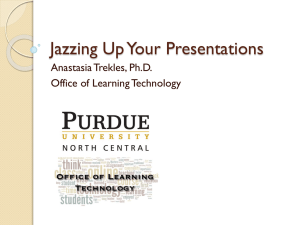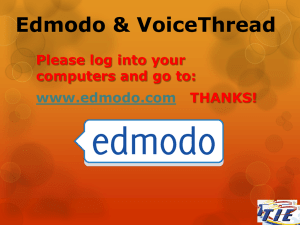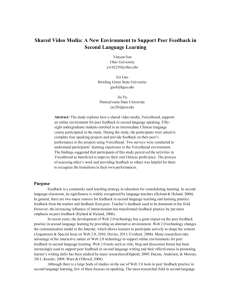Session 6: The Practice of Historical Thinking – Learning to Read
advertisement
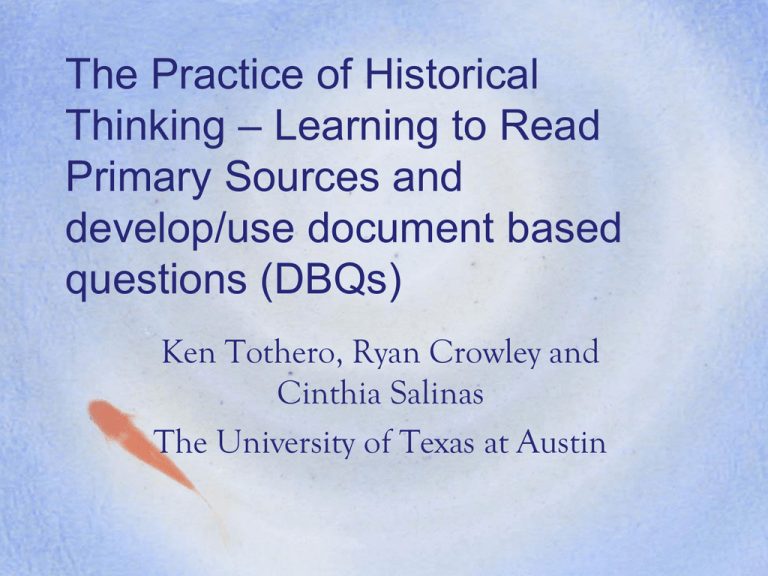
The Practice of Historical Thinking – Learning to Read Primary Sources and develop/use document based questions (DBQs) Ken Tothero, Ryan Crowley and Cinthia Salinas The University of Texas at Austin Ways in which we may already approach primary sources- ExampleAPPARTS • Author - Who created the source? What is their point of view? • Place and Time -Where and when was the source produced? • Prior Knowledge - What do you already know that would further your understanding of this sources? • Audience - For whom was the source created? Does this affect the reliability of the source? • Reason - Why was this source produced at the time is was produced? • The Main Idea - What is the source trying to convey? • * Significance - Why is this source important? • (College Board) • A note—we consider each of these elements-a scaffolding collection of document based questions Ways in which we may already approach primary sources- Example-SOAPS 1. What type of document is it (newspaper, map, advertisement, letter, telegram, report, journal, photo, film, etc.)? 2. What are some of the unique physical qualities of the document (letterhead, handwritten, seals, notations, stamps, etc.)? 3. What kind of primary source is it ? 4. Who is the Speaker? (what do we know of the speaker strictly form the document, what do we know from the metadata, what do we know from further research?) 5. What is the Occasion? (Time period, historical significance, other contemporary events) 6. Who is the Audience? (Who was the document designed?) 7. What is the Purpose of the document? (What did the document do or achieve? Was that its intended purpose?) 8. What is the Subject of the document? (what is the basic story?) 9. What is the Bias you find in the document? (What did the creator leave out, who did the creator leave out?) 10. What new questions do you have that leads to further research? (Dig deeper!) A note—we consider each of these elements-a scaffolding collection of document based questions Ways in which we may already approach primary sourcesExample-OPVL • • • • Origins (primary and/or secondary), Purpose, Values, Limitations • A note—we consider each of these elements-a scaffolding collection of document based questions Ways in which we may already approach primary sources-Example-The National Archives Analysis Worksheets • Written Document * • Artifact • Cartoon * • Map • Motion Picture • Photograph * • Poster • Sound Recording http://www.archives.gov/education/lessons/ SCIM-C • • • • • • • • • • • • • • • • Summarizing What type of historical document is the source? What specific information, details and/or perspectives does the source provide? Contextualizing When and where was the source produced? Why was the source produced? Inferring What is suggested by the source? What interpretations may be drawn from the source? Monitoring What additional evidence beyond the source is necessary to answer the historical question? What ideas, images, or terms need further defining from the source? How useful or significant is the source for its intended purpose in answering the Corroborating What similarities and differences between the sources exist? What factors could account for these similarities and differences? (Hicks, Doolitle, & Ewing, 2004) http://www.historicalinquiry.com/ Any other approaches? • What is common to your classroom in working with primary sources? At the core of historical thinking • It’s about READING a primary source…getting all you can out of it by being systematic and deliberate— be as close to a historian as we can be • First…sourcing • Second…epistemology (fancy word for comprehension) • Third…typically significance (guiding big idea) • But consider Agency and Empathy BEFORE significance At the core--Where do we begin (initial)…with the source/sourcing DBQs • Identification-What do we know about the source—what is it? How old is it? • Attribution-why was the primary source created by the author?...in what context? What type of document is it (newspaper, map, advertisement, letter, telegram, report, journal, photo, film, etc.)? What are some of the unique physical qualities of the document (letterhead, handwritten, seals, notations, stamps, etc.)? What kind of primary source is it ? • (VanSledright, 2010) Sourcing questions • What type of historical document is the source? • Who ‘produced’ it? When was it produced? • Via voice thread.… we will respond by typing into the Voicethread Logging into Voicethread • You can get the link to our Voicethread on the institute website – tinyurl.com/fordinstitute – Click the “Cinthia and Ryan’s Voicethread link” • Click “Sign in or Register” on the bottom left of image • Email is the email you used when you registered for the institute • Password is first three letters of first name and first three letters of last time (first letter of each capitalized • For me: RyaCro • For Cinthia: CinSal BREAK Epistemology DBQs—warning— at all times watch the flow of prior knowledge • How Do You Know What You Know—this is basic comprehension What do you see (visual--what do you see—what is going on)(text-what are the points being made? What historical terms do you need to know more about? • Via voice thread…(we all respond with voice) At the core-Reading/negotiating through primary sources • DBQs-the only way we can see ourselves as a part/participant of history –a way to make history accessible to students (though need to be aware of ‘presentism’ • Historical Agency (the power to make decisions) • AND Empathy (the notions of feeling) • Historical Significance DBQs-why is it historically significant? (Seixas,1993 ) Historical Agency DBQs • Agency implies that people in the pasts faced choices, they made decisions, and the resulting actions had consequences-what options did American policy makers have? Empathy DBQs • Empathy understand historical figures are agents who faced conflicts, constraints, & hardships under circumstances & with ways of thinking quite different from their own-- how did they feel? Historical Significance DBQs • What is important in the past, and why is it important? • Note that we must explore what makes an event significant and recognize that perspectives may differ. Build your own Primary Source/DBQs with Voicethread • To your own voice thread via Ryan • Choose from cartoons on our tinyurl site. • With a partner– write Epistemology, Agency, Empathy, Significance document based questions • Whole share Let’s Build a Voicethread • Download two of the Vietnam editorials from the institute website • Go to our Voicethread site: • http://ptlsummerinstitute.ed.voicethread.com/ • You should be logged in already, so click “Create” at the top of the page • Click “Upload,” click “My Computer,” select the Vietnam editorial you downloaded. • Repeat the process to upload the second editorial cartoon • Click the “Comment” tab, then click “Comment” on the Voicethread. • Upload your DBQs on each Voicethread slide Building a Voicethread (cont.) • After posting your DBQs, click on “Share” • Click “Get a link” • Make sure “anyone can view” and “anyone can comment” are checked • Make sure that “Moderate comments” is not checked • Click “Copy the Link” and then paste it to share the link. Overall then…systematic • Historical thinking is intuitive for those of us constantly immersed in the field—but how can we help to make it intuitive to others-to our students? • Sourcing as a simple & yet essential starting DBQ collection • Epistemology DBQs as a way to ensure we don’t miss the obvious • Agency & Empathy DBQsto bring our student in • Significance DBQs-to finally get at the students to the big questions and answers Reflections on using Voicethread • Whole class • Small group • Individual
